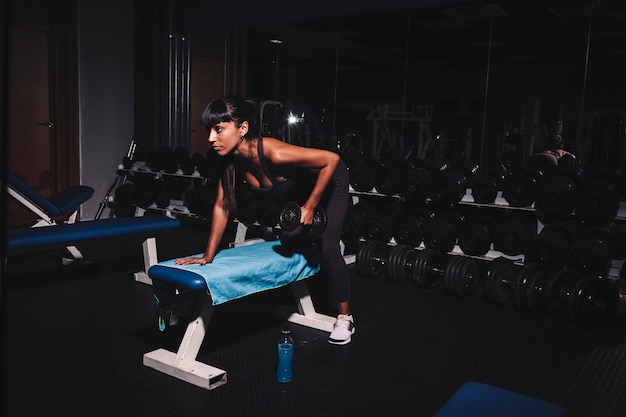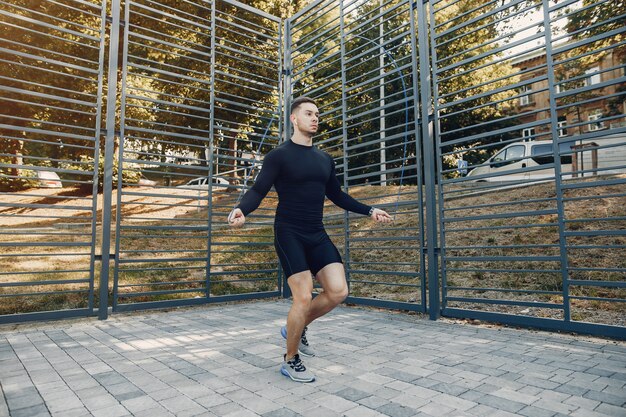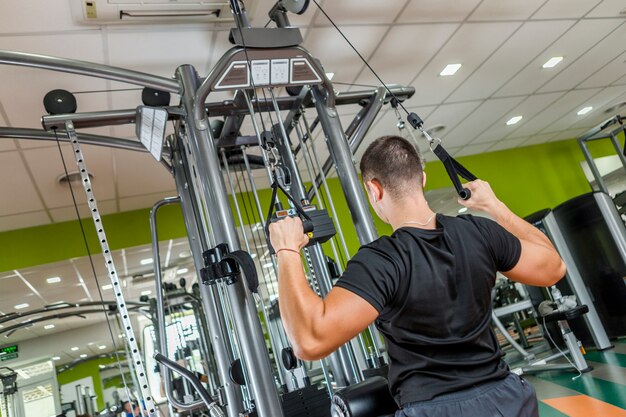The Barbell Bench Press is a classic exercise that’s been a mainstay in strength training and bodybuilding for decades. This compound movement works multiple muscle groups at once, making it an efficient and effective way to build upper body strength. It’s also known as Bench Press or Flat Bench Press.
The Basics of the Barbell Bench Press
The Barbell Bench Press is a core exercise in strength training, known for its ability to engage various upper body muscles. Primarily, it targets the pectoral muscles, which are crucial for many upper body movements, especially pushing motions. But the exercise benefits don’t stop at the chest. The anterior deltoids in the front of the shoulders also get a good workout, which helps improve shoulder stability and strength. Additionally, the triceps at the back of the arms are actively involved, aiding in better arm extension and activities that involve pushing or throwing.
Including the Barbell Bench Press in your workout can boost muscular endurance, improve athletic performance, and contribute to a strong upper body. This versatile exercise can be adjusted for different fitness levels, making it suitable for both beginners and advanced trainers.
How to Perform the Barbell Bench Press
To perform the Barbell Bench Press correctly and safely, follow these steps:
Preparation
1. Lie flat on a bench with your feet firmly on the ground for stability and support.
2. Grip the barbell with hands slightly wider than shoulder-width apart to optimally engage the pectoral muscles and minimize shoulder strain.
Starting Position
1. With assistance or in a controlled manner, un-rack the barbell and hold it straight above your chest. Your arms should be fully extended but not locked, and your eyes should be directly under the bar.
2. Take a deep breath and engage your core to stabilize your torso and protect your lower back.
Descending Phase
1. Slowly lower the barbell towards the middle of your chest, keeping your elbows at a 45-degree angle from your body. This helps prevent shoulder injuries and ensures effective targeting of the pectoral muscles.
2. Maintain control of the bar as you descend, ensuring it moves in a straight line. A smooth and controlled descent should take about 2-3 seconds.
Bottom Position
1. Gently touch the bar to your mid-chest, avoiding any bouncing. This is crucial for full chest muscle engagement.
2. Keep your wrists straight and your forearms perpendicular to the floor to maintain proper form and force application.
Ascending Phase
1. Exhale and press the bar upward, using your chest and triceps to return to the starting position. The push should be powerful yet controlled, avoiding any jerky movements.
2. Ensure the bar path remains straight and vertical to optimize muscle engagement.
Lockout
1. Once the barbell is fully lifted, your arms should be straight but not locked out, completing one repetition.
2. Inhale and prepare to lower the bar for the next repetition, maintaining controlled motion and proper form.
Throughout the exercise, keep your shoulders retracted, lower back slightly arched, and glutes in contact with the bench to maintain proper posture and force transfer.
Variations of the Exercise
Different variations of the bench press can cater to various training needs and preferences:
1. Flat Bench Press with Dumbbells: This allows for a greater range of motion, targeting the pectoral muscles from different angles, promoting balanced chest development and engaging stabilizing muscles in the shoulders and arms.
2. Incline Bench Press: Done on an inclined bench, this variation focuses on the upper pectoral muscles and anterior deltoids, crucial for a well-defined upper chest.
3. Decline Bench Press: This targets the lower pectoral muscles, helping sculpt a fuller chest.
4. Close-Grip Bench Press: A narrower grip shifts emphasis to the triceps and inner chest, strengthening the arms and enhancing chest definition.
5. Reverse Grip Bench Press: Using a reverse grip targets the upper chest and triceps more intensely, offering a unique muscle growth stimulus.
Each variation offers unique benefits and can be chosen based on individual goals like muscle growth, strength enhancement, or correcting muscle imbalances. A mix of these exercises can lead to comprehensive chest development and upper body strength.
Muscles Involved in the Barbell Bench Press
Primary Muscles
– Pectorals: The main muscles targeted, responsible for moving the arms across the body and rotating them inward.
– Anterior Deltoid: Located in the shoulders, responsible for raising the arm.
– Triceps Brachii: Found at the back of the upper arm, responsible for straightening the arm.
Secondary Muscles
– Coracobrachialis: Helps in arm flexion and adduction.
– Biceps Brachii: Assists in arm flexion.
Stabilizing Muscles
Several muscles act as stabilizers during the Barbell Bench Press, including muscles in the shoulder, scapula, elbow, grip, torso, hip, knee, ankle, and foot, all of which help maintain proper form and stability.
In summary, the Barbell Bench Press is a fundamental exercise in strength training. It effectively targets multiple muscle groups and is an efficient way to build upper body strength, making it a great addition to any workout routine, whether you’re a beginner or an experienced lifter.







